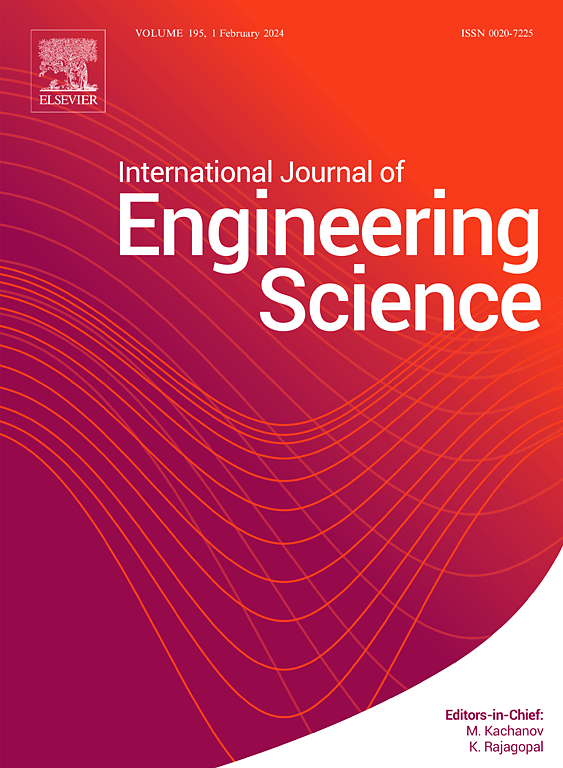Predictive asymptotic models of damage evolution in thin adhesives with tension–compression asymmetry
IF 5.7
1区 工程技术
Q1 ENGINEERING, MULTIDISCIPLINARY
International Journal of Engineering Science
Pub Date : 2025-09-18
DOI:10.1016/j.ijengsci.2025.104384
引用次数: 0
Abstract
In structural engineering, accurate modeling of material damage is crucial, particularly the tension–compression asymmetry observed in quasi-brittle materials and adhesive joints. While cohesive interface models are commonly employed in the analysis of bonded structures, the parameters of these models frequently lack a direct correlation with the physical properties of the adhesive layer. To address this issue and capture the tension–compression asymmetry, this study uses asymptotic analysis to derive two new interface damage models (termed F1d and F2d) from a thin damaging interphase. The proposed models are formulated within a thermodynamically consistent framework. The F1d model uses a single damage variable with an asymmetric evolution law, whereas the more advanced F2d model uses separate variables for tensile and compressive damage, enabling independent evolution kinetics. To bridge the gap between scales and link macroscopic damage to micro-defect evolution, the new models are coupled with two micromechanical schemes: the non-interacting Kachanov–Sevostianov model and the Mori–Tanaka–Benveniste model, the latter of which accounts for defect interactions. The theoretical formulations of the models are presented, and their predictive capabilities are demonstrated through numerical simulations of a bonded joint under axial loading.
具有拉压不对称的薄胶粘剂损伤演化的预测渐近模型
在结构工程中,材料损伤的精确建模是至关重要的,特别是在准脆性材料和粘接接头中观察到的拉压不对称。粘结界面模型通常用于粘结结构的分析,但这些模型的参数往往与粘结层的物理性质缺乏直接的相关性。为了解决这一问题并捕获拉压不对称,本研究使用渐近分析从薄损伤界面中推导出两种新的界面损伤模型(称为F1d和F2d)。所提出的模型是在热力学一致的框架内制定的。F1d模型使用具有非对称演化规律的单一损伤变量,而更先进的F2d模型使用单独的拉伸和压缩损伤变量,实现独立的演化动力学。为了弥合尺度之间的差距,并将宏观损伤与微观缺陷演变联系起来,新模型与两种微观力学方案相结合:非相互作用的Kachanov-Sevostianov模型和Mori-Tanaka-Benveniste模型,后者考虑缺陷相互作用。给出了模型的理论表达式,并通过轴向载荷作用下的数值模拟验证了模型的预测能力。
本文章由计算机程序翻译,如有差异,请以英文原文为准。
求助全文
约1分钟内获得全文
求助全文
来源期刊

International Journal of Engineering Science
工程技术-工程:综合
CiteScore
11.80
自引率
16.70%
发文量
86
审稿时长
45 days
期刊介绍:
The International Journal of Engineering Science is not limited to a specific aspect of science and engineering but is instead devoted to a wide range of subfields in the engineering sciences. While it encourages a broad spectrum of contribution in the engineering sciences, its core interest lies in issues concerning material modeling and response. Articles of interdisciplinary nature are particularly welcome.
The primary goal of the new editors is to maintain high quality of publications. There will be a commitment to expediting the time taken for the publication of the papers. The articles that are sent for reviews will have names of the authors deleted with a view towards enhancing the objectivity and fairness of the review process.
Articles that are devoted to the purely mathematical aspects without a discussion of the physical implications of the results or the consideration of specific examples are discouraged. Articles concerning material science should not be limited merely to a description and recording of observations but should contain theoretical or quantitative discussion of the results.
 求助内容:
求助内容: 应助结果提醒方式:
应助结果提醒方式:


